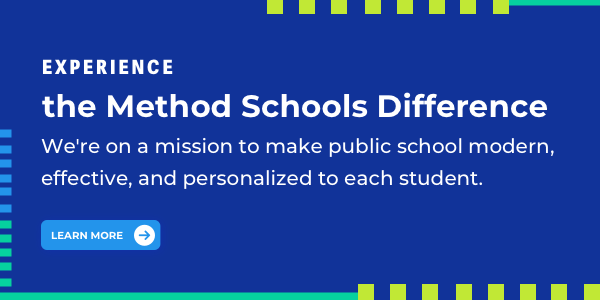Charter vs. Traditional: Why Choose a Public Charter School
You want your child to have the best education possible. And that can be a lot of pressure for any parent. After all, the decisions you make now will affect your child’s future.
Unfortunately, when it comes time to choose between a traditional school and a public charter school, parents don’t always have the clearest information.
Breathe easy. We’re here to help educate you on all of your schooling options.
It’s time to go back to school and learn about ... school. Read on to learn what the differences are between traditional schools and public charter schools.
What Is the Difference Between Charter Schools and Traditional Schools?
Most people know there are differences between charter schools and traditional public schools. Unfortunately, those differences aren’t always obvious.
Before diving into the differences, let’s look at how these two types of schools are similar:
- Both are types of public schools
- Both receive public funding
- Both are open to the public
- Neither charge tuition
- Both must uphold a set of standards in order to receive funding
With those basic similarities in mind, here are some key differences.
Funding
Although both charter and traditional schools receive public funding, how they receive funding—and how they’re required to report spending—can differ. Traditional schools usually pull in part of their funds from the state’s budget and meet other needs through federal and local taxes.
Charter schools also receive funding from state and local taxes, but it is usually handed out on a set, per-pupil basis. What’s more, because they fall into the schools of choice category, charter school spending tends to be heavily scrutinized. As a result, charters end up needing to meticulously keep track of how funded money is spent.
Government Regulations
Even though both types of schools have to stick to predetermined standards, the standards themselves can differ. Traditional schools are tied to the state school board’s regulations, as well as national standards. Charter schools have more flexibility to design criteria.
Instead of being fixed to the state board, charters usually have an independent board that lays out a set of standards and curricula. Once those standards are approved, charter schools need to uphold their charter in order to secure state funding.
Flexibility
Because traditional schools are directly tied to state school boards, they tend to have less flexibility in curriculum, teaching models, and classroom structure. Even though charter schools are fixed to their charter, they have the flexibility to choose the curriculum and teaching models that board members agree will benefit students the most.
That doesn’t mean public charter schools always have curricula that differ drastically from public schools’ curricula. It does mean charter schools have more freedom to use their curricula in a way that best serves students.
Application Process
Most people know traditional public schools don’t have an application process. However, the admission process for charter schools is sometimes misunderstood.
Although some public charter schools do require an application, they don’t require entrance exams to enroll, and they’re open to the public. For instance, when students apply for Method Schools, they simply fill out an online application form, and an enrollment specialist helps them get set up.
Common Myths About Charter Schools
Because they’re a newer venture than traditional schools, there are common misperceptions about charter schools. Many people wrongly lump them in with private schools or simply don’t have a clear understanding of what charter schools are.
Here are some common myths about charter schools and the reality behind them.
Myth #1: Charter Students Have Lower Student Performance
With so many different types of charter schools out there, it is misleading to paint all charter schools with a broad brush. Still, some people wrongly assume charter schools underperform compared to their traditional counterparts.
In reality, reports suggest there aren't major differences in student performance at traditional and charter schools. In fact, one recent U.S. Department of Education's National Center for Educational Statistics (NCES) study found no measurable difference in traditional and charter school student performance.
But if you’re interested in choosing a charter school for your child’s education, it is best to remember different charter schools will drive different results. Ultimately, student performance depends on the quality of the curriculum, how the individual program is designed, and the school’s teaching quality.
Myth #2: Charters Unfairly Target High-Income Students
Not only is it untrue that charter schools target high-income students, but the truth actually runs in the opposite direction. In fact, according to recent NCES figures, public charters serve a higher percentage of low-income students than traditional public schools. Here’s what the study found over the course of the 2017–18 school year:
- Thirty-seven percent of public charter schools were designated high-poverty schools.
- Twenty-five percent of traditional public schools served a high-poverty population.
Myth #3: Charter Schools Aren’t Public Schools
Much of the time, people confuse charter schools with private schools. But it is inaccurate to view charter schools in the same light as private schools.
Make no mistake: Public charters are public schools. They rely on public funding and are open to everyone—just like traditional public schools. Also, unlike most private schools, charter schools are free to attend.
Myth #4: Charter Schools Subtract from the Community
An especially vicious rumor about charter schools is that they subtract from the progress of a community. Some people assume that charter schools somehow pull funding from traditional public schools and stifle diversity. This is another case in which the opposite is actually true.
Because charter schools can be more flexible with curricula and teaching models, they provide more learning options for community members. For instance, if you believe an online curriculum fits your student’s learning style better than a traditional classroom environment, some charter schools help students qualify for college through fully online classes.
Beyond providing new learning opportunities, charter schools also tend to be more racially diverse than traditional schools. According to 2018 NCES Data:
- Twenty-three percent of public charter schools had more than 50 percent Black enrollment, compared to 9 percent of traditional schools.
- Twenty-seven percent of public charter schools featured higher than 50 percent Hispanic enrollment, compared to 17 percent of traditional public schools.
Overall, charter schools provide more options for community growth, not fewer.
Myth #5: Charter Schools Are Unregulated
It is true that charter schools have more flexibility during the curriculum-building process than traditional public schools. But that doesn’t mean charter schools are unregulated.
They still have to follow laws, and they aren’t allowed to discriminate during admission. Many charter schools are also accredited by renowned educational bodies. To earn state funding, they have to craft a clear set of regulations, and they need to prove they’re meeting standards.
Myth #6: All Charter Schools Are the Same
It is easy to throw all charter schools underneath the same umbrella, but they can vary drastically in quality, structure, and methods. The very nature of charter schools allows for diverse programs.
For instance, some charter schools provide an online curriculum that is designed for distance learners. Others are confined to a physical classroom, and others might use a hybrid model. Even within those broad models, charter schools might provide a range of different teaching philosophies, curriculum standards, and educational methods.
Why Parents Are Choosing Charter Schools
Even with so many myths and misunderstandings floating out there about charter schools, they’re still becoming a popular choice for parents and students. Here are some reasons parents are choosing charter schools over traditional public schools.
More Flexibility
Simply put, charter schools are able to provide more advanced learning methods and models. That makes them attractive to parents who want the classroom to adapt to their student’s learning level.
Charter schools aren’t always limited to a set “grade level,” as is common with traditional schools. That means it is easier for students to advance at their own pace.
At the same time, many parents whose students are seriously pursuing extracurricular activities are attracted to charter school flexibility. That’s because many charter schools offer an online curriculum that doesn’t penalize student athletes or artistic performers. As a result, these students can travel for events and continue to complete credits on the road without worrying about missing out in the classroom.
More Personal Guidance
Many parents choose charter schools because they’re simply better suited to their child’s needs. Because charter schools have the freedom to incorporate innovative teaching methods, students are able to advance beyond their traditional “year.” So if your fifth grader has mastered the material that’s common for their age group, they aren’t left sitting idle in a classroom as peers catch up.
These same flexible qualities make it easier for students who are lagging to catch up and learn at their own pace. For instance, in some cases, charter schools might pick up more experience-based programs that focus on hands-on learning.
All the while, parents are able to use charter schools to choose programs that fit their student’s needs. And they aren’t tethered to a geographical location the way they often are with traditional ZIP code-based public schools.
Advanced College Prep
If your child is eying college, you might wonder how charter schools fit into their future plans. Many parents choose charter schools because they make it easier for students to pursue their passions and qualify for college admittance.
For instance, some online charter schools provide NCAA-approved coursework, so learners can qualify for college programs during a hectic athletic schedule.
Remote charter school models can also offer the same advantage for homeschoolers. When it comes time to prepare for college, some remote charter schools let students gain skills for college without asking them to uproot their home-centered lifestyles.
See How Online Public Charter Education Can Help Your Child Succeed
If you think online public charter education is a good fit for your child, it is worth researching the top options out there. And not all charter schools are created equal. Here are some things that make Method Schools stand out:
- We’re Western Association of Schools and Colleges (WASC)-accredited
- We provide University of California (UC)-approved and NCAA-approved coursework
- We focus on advanced online curricula and low class sizes
- We use a custom SmartFox curriculum to promote personalized learning outcomes
- We promote experiential learning through field trips and social gatherings
Want to learn more about Method Schools? Schedule a call with one of our education professionals and see if it is the right fit for your child.




-1.svg)
.svg)
-1.svg)
.svg)
.svg)

.svg)










.svg)
.svg)






